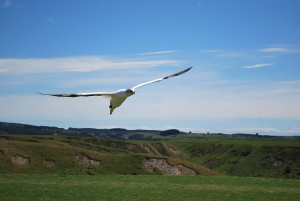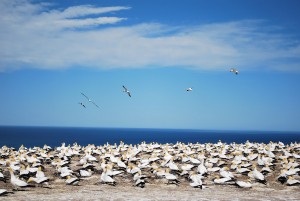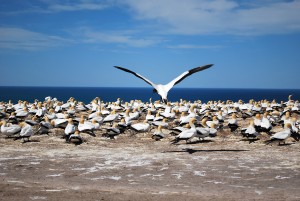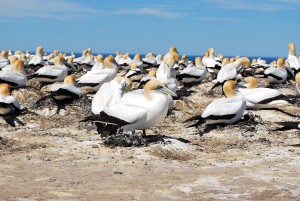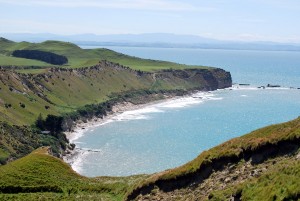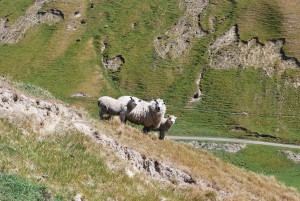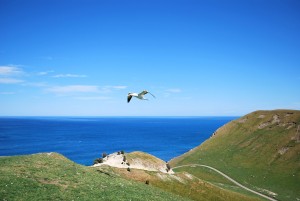Jim and I recently took a trip to Cape Kidnappers, one of the local Hawke’s Bay attractions. The Cape creates the southern coastline of the Bay and is clearly visible from our house. It is also home to what is claimed by New Zealanders to be “the largest and most spectacular mainland nesting place of gannets in the world.” We questioned this description because we think of NZ as an island rather than a chunk of mainland, but I guess that’s getting sort of nit-picky!
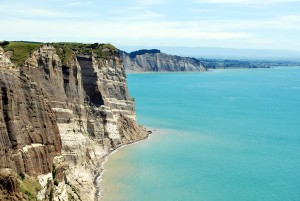
The Cliffs of Cape Kidnappers
The origin of the Cape’s name is a little murky, but basically boils down to the label coming from the famous British explorer, Captain James Cook, who sailed to New Zealand several times during his travels and was the first person to circumnavigate and map the country. The story goes that in 1769 during Cook’s first voyage to NZ, local Maori attempted to kidnap a young Tahitian servant boy from Cook’s ship, Endeavour. The boy escaped from the islanders and swam back to the ship and to safety. Thus, the Captain gave the name Cape Kidnappers to the area. At the tip of the headland is a pointed rock the juts out of the water that was named the Fish Hook by the Maoris. According to their legends it is with this hook that their ancient god Maui pulled the North Island from the ocean.
The only ways to get to the gannet colonies are by tractor along the beach at low tide, or overland through a private property by bus. We took the bus option! The 5,000 acre farm that makes up the majority of Cape Kidnappers is owned by an American who has built a lodge and a golf course there, as well as his personal residence. Besides being home to the gannet colonies and catering to tourists, the farm also has active beef and sheep operations. The two tour companies that provide access to the gannets have a deal to enter the property and this is the only means by which a visitor can access the Cape. According to the literature, there are approximately 20,000 birds that return to the Cape’s four main colonies each year to nest. The Australasian Gannet is a member of the Booby family and they mate for life, rearing only 1 chick per year. When the baby gannet is about 4 months old it leaves for Australia and doesn’t come back to NZ for 3-5 years, when it is ready to begin the reproductive phase of its life. It is reported that the bird generally lives between 25 and 40 years.
The tour itself lasted about 3 hours. It took a little over an hour to get there; time for pictures, tea and biscuits; then another hour back. It was amazing that you could get so close to the birds… they were all behind a low, chain-link barrier and stayed on their side, swooping in over tourists to land in the large group. Sometimes they would take off and just land again, other times you could see one carrying something in its beak to eat. They were pretty birds, but the smell was pretty overpowering! Can you imagine what the stench of thousands and thousands of gannets’ droppings smells like? Whew!
The views from Cape were really very good. There was a little haze in the distance, but overall it was a great day to visit and take a few pictures. It was one of the first really warm days of Spring and we managed to pick a day that the wind wasn’t too strong.
We enjoyed the afternoon experiencing more beautiful scenery here in the Hawke’s Bay region.


